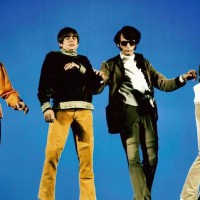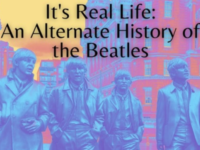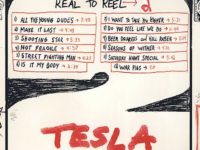“Things happen here about, they don’t tell about. I see things. You see, they say that it’s just an old man talking. You laugh at an old man. This thing that laughs and knows better.”
Pretty mundane lines on page, the above – drunkenly spewed by some sun-blanched sot toward the beginning of 1974’s The Texas Chainsaw Massacre – depresses that little button that tells the audience, and should’ve tipped the victims-to be, that this little roadtrip is not to end in sunshine and flowers.
Not that this title wasn’t to the point. Released on Oct. 11, 1974, The Texas Chainsaw Massacre was made on a shoe-string budget by the late director Tobe Hooper (Poltergeist, Billy Idol’s video for “Dancing With Myself,” Invaders From Mars) with mostly amateur actors – shot, then, like porn.
The movie, a study in terror and dementedly human wickedness, is phenomenal. Still, the only reason I’ve subjected myself to its visceral hysterics more than once is that it contains moments that transcend into a kind of poetics of evil.
There is more than a shiver of genius to this cinematic creature, specifically recalling that original sense of genius as being possessed by some higher consciousness. The soundtrack is unmatched – the sonic, the psychological, equivalent of nails dragged across a chalkboard.
Hooper’s frequent citing of the sun, that profound entity of perpetual explosion and ungodly temperatures; the scattered logic of seriously twisted home-decorations; the morose consciousness of cattle awaiting slaughter; the (seemingly) off-the-cuff comment about astrological tidings; and finally the sickeningly, senselessly sadistic reality of the cozy little killer family, seem to quest the bounds of ethicality.
“Evil just is,” it seems to whisper into your ear. “Don’t blame it, don’t try to understand it. Just stay away.” The film’s resident monster – a gibbering hulk named Leatherface – launched the unfortunate careers of dime-a-dozen evil freaks with curious headgear, but the evilest evil lurks elsewhere in the movie.
Excepting for its centerpiece, where an unbroken shrieking momentarily re-introduces disbelief (for an ironic reason, since it is realistic), this is inspired film-making – and, quite literally, breathtaking. Be warned, however, Tobe Hooper’s Texas Chainsaw Massacre is not placid fare.
[First published in Muse magazine.]
- How the Pixies Changed Everything With ‘Surfer Rosa’ - July 12, 2023
- Frank Zappa – ‘Funky Nothingness’ (2023) - June 30, 2023
- How Jim White’s ‘Wrong-Eyed Jesus!’ Changed My Mind About Country Music - June 14, 2023




